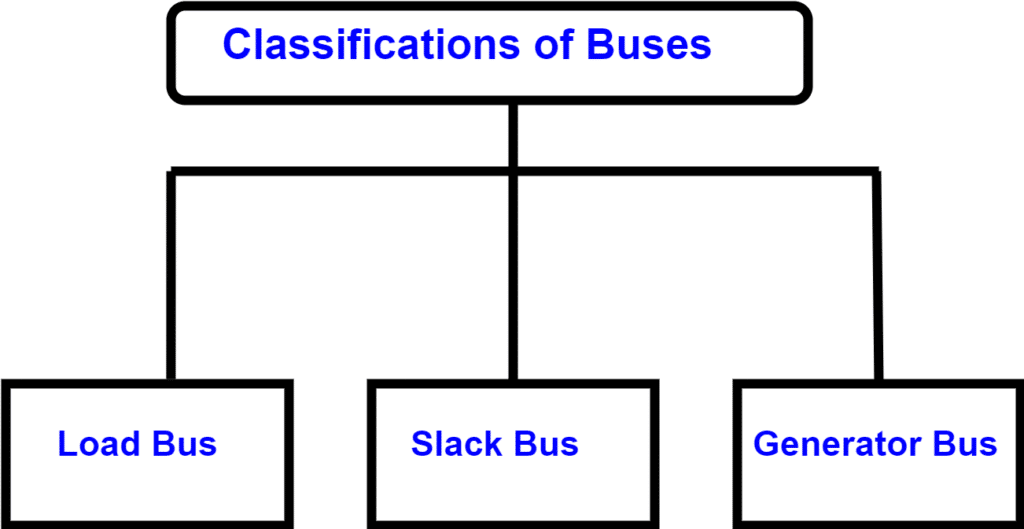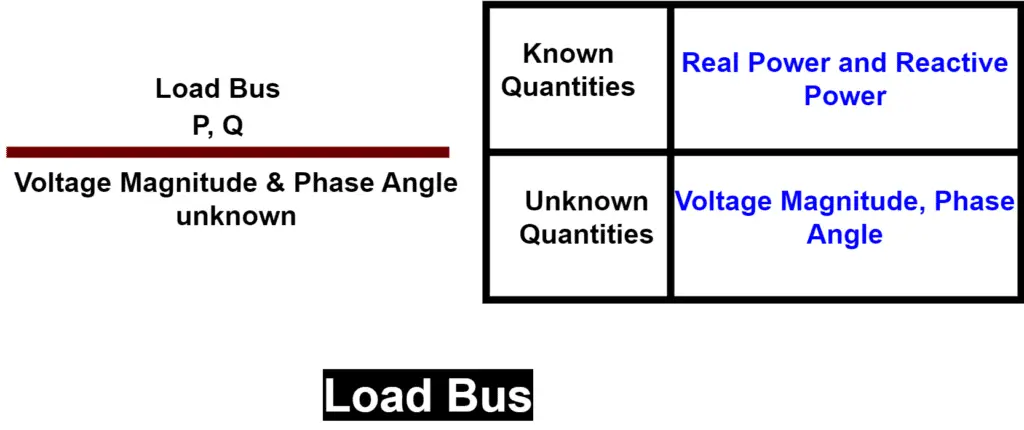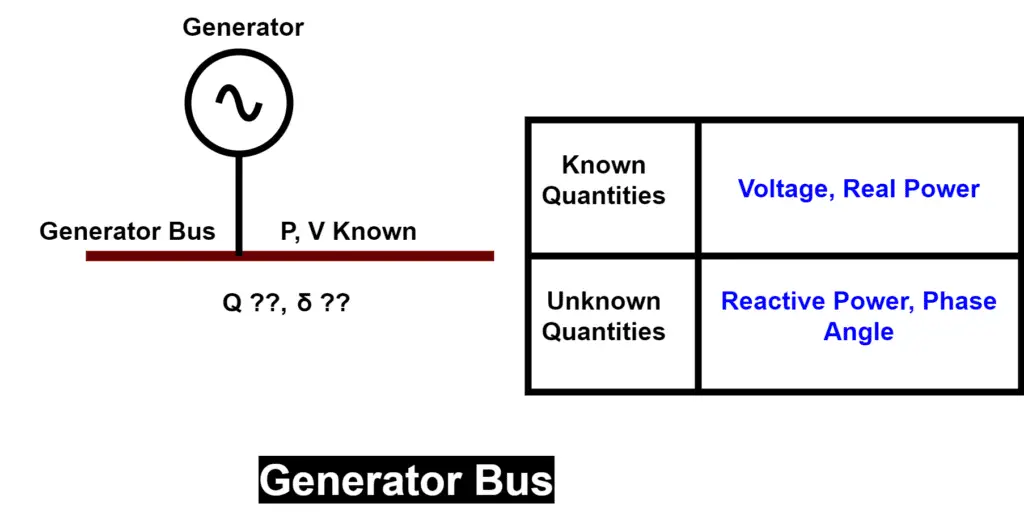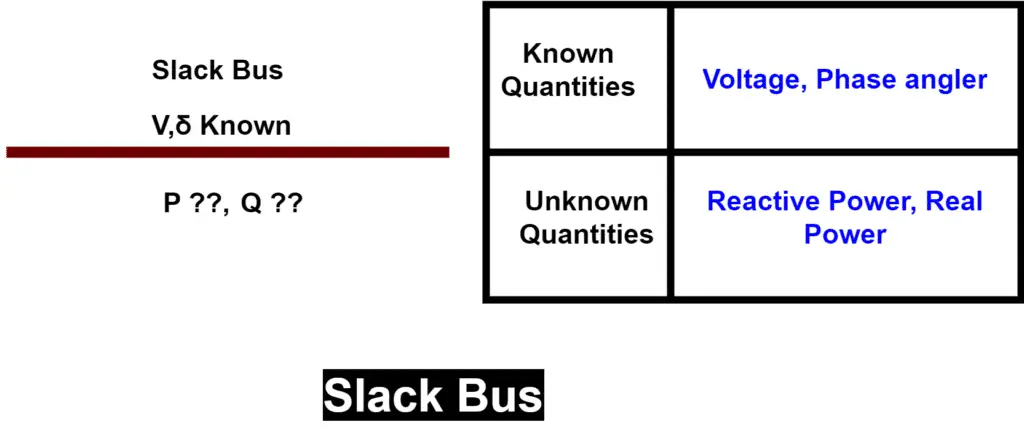Load Bus, Generator Bus, and Slack Bus are three important terminologies used in the power system. The power system mainly covers the generation, transmission, and distribution parts of the electrical network and, it has interconnections of various buses.
Each bus of the power system is assigned four electrical parameters for the design and study of the power system. The four electrical quantities of the bus are the magnitude of voltage, phase angle, active or real power, and reactive power. Out of four electrical quantities, two quantities are known, and the rest two quantities are calculated for the load flow studies and analysis.
Types of Buses
The classification of electrical buses is done as per the known quantities. There are three types of electrical buses on the basis of known electrical quantities.

The name of the buses are;
- Load Bus
- Generator Bus
- Slack Bus
The types of buses and the associated known and unknown quantities are shown in the below table
| Type of Buses | Known Quantities | Unknown Quantities |
|---|---|---|
| Load or P-Q Bus | P, Q | | V |, δ |
| Generator or P-V Bus | P, | V | | Q, δ |
| Slack or Reference Bus | | V |, δ | P, Q |
Now, we will discuss each bus in detail.
1. Load Bus
The real or active power P and reactive power Q are specified and known for load bus. The load bus is also known P-Q bus because we do the sum of real power (P) and reactive power (Q) at the load bus.

The two unknown parameters magnitude of voltage V and phase angle δ need to be computed for load flow analysis. The voltage tolerance of 5 % is allowed at load bus, therefore bus voltage is not paramount and hence it is not mentioned for this bus.
2. Generator Bus
The generator supplies the active power to electrical loads by governing the control valve of the fuel governor. The electrical load also needs reactive power for its operation and the generator needs to deliver it.

The generator AVR continuously monitors the output voltage of the generator and maintains the generation voltage constant. Thus, the two parameters active power and voltage are known for the generator bus and therefore the generator bus is also called voltage controlled bus or P-V bus. Two electrical quantiles- reactive power Q and phase angle δ-need to be computed for the generator bus.
3. Slack Bus
The other names of the slack bus are the swing or reference bus. slack bus does not really exist but it is the bus considered for accounting for the power losses in the transmission system. The generator generates active & reactive power to deliver to the electrical load. When the load draws power from the generator, it draws active as well as reactive power.
The power is nothing but the product of voltage and current. The load center and generator location is generally far away from each other and power transmission is done through the overhead conductors or cables. Conductors have a finite resistance and when current flows through it, the copper loss I2R in the form of heat energy occurs in the transmission system. Thus, the power delivered at the generator bus and power consumed at the load bus can not be the same because of the transmission losses. This loss can be calculated after doing the load flow analysis.

Therefore to supply power loss, Therefore, an extra generator bus is considered to supply power loss. The voltage magnitude V and phase angle δ are known and active power P and reactive power Q are to be computed for the slack bus.
The phase angle of the slack bus is considered for reference for the entire load flow solution, and therefore the slack bus is also known as Reference Bus.